Walking on Sunshine - 7 Lesser-Known Hotspots
Can’t wait for warm rays to break through at home? Jo Davey finds lesser-known spots to bask amid historic architecture, dramatic scenery, wildlife and truly local cuisine
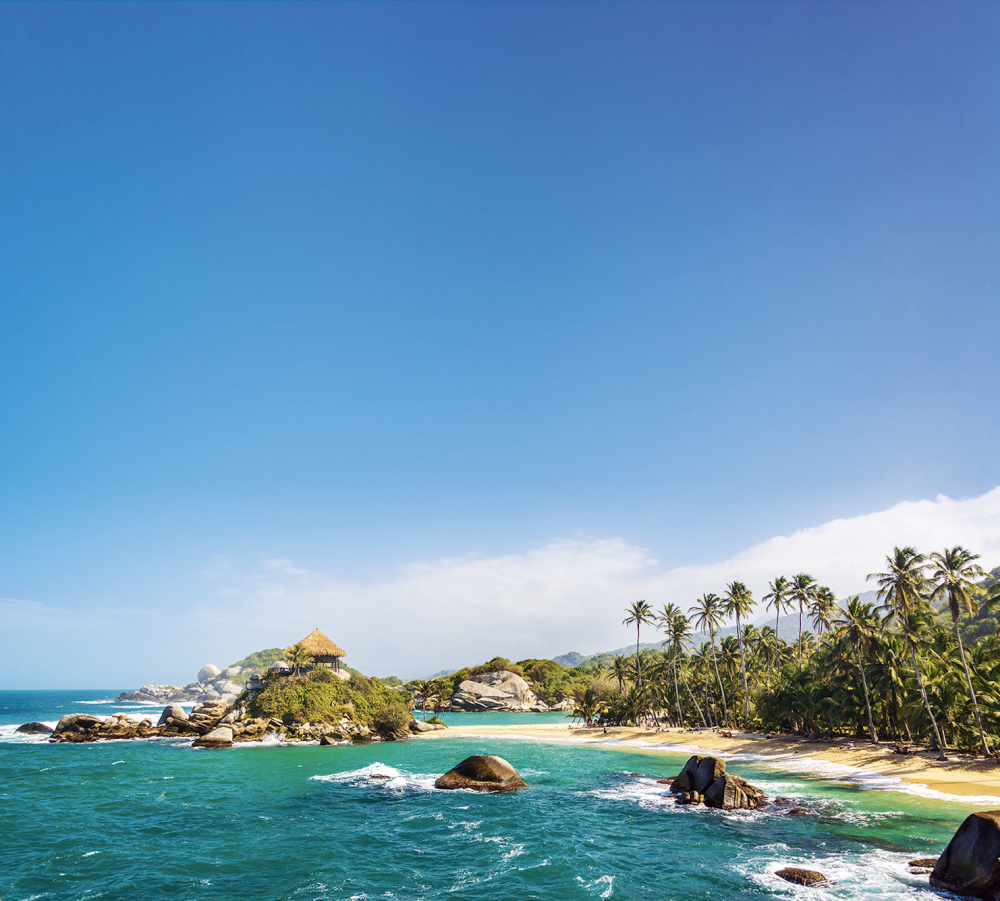
Can’t wait for warm rays to break through at home? Jo Davey finds lesser-known spots to bask amid historic architecture, dramatic scenery, wildlife and truly local cuisine
Santa Marta is a gateway, a city half-skipped by visitors keen to dash off to Colombia’s wilderness or archaeological sites. It’s an excellent hop-off point, but the oldest Spanish colonial city in Colombia – and one of South America’s oldest continuously inhabited cities – is more than a transit hub. Once a gritty beach city on Colombia’s Caribbean coast, Santa Marta has grown up in recent years. Spruced with renovations, new restaurants and businesses, the city has still managed to keep a bit of its roughand- ready spirit and fun character.
Its flat expanse is freckled with palm trees and backed by low-lying hills. Hidden among the greenery and sand-coloured houses is a centre of colourful, colonial avenues and whitewashed churches. Santa Marta days start in its cafés: find the slinky Carrera 3 side street and sink into an exceptional cup of strong, Colombian coffee. Nearby Minca – a brilliant day trip of waterfalls and verdant forest to the south – is home to a 125-year-old coffee farm that supplies many of Santa Marta’s morning mugfuls.
With the sea so close, there’s exceptional seafood. You’ll find ceviche, coconut-stewed fish, seafood cocktails, and the city’s own style of bandeja paisa, a platter filled with fried fish, coconut rice, salad and fried plantain patacones. Santa Marta loves its fried foods and you’ll find street stalls on corners in almost every neighbourhood, sending out steaming curlicues well into the warm evenings. Tuck into egg arepas, stuffed potatoes and carimañolas, yuca fritters filled with meat and melting cheese.
One of Santa Marta’s newer additions is its excellent Museo del Oro. The free museum houses pre-Columbian gold as well as jewellery, ceramics and metalwork excavated from the Sierra Nevada region. The coastal boulevard, Paseo de Bastidas, has also been recently renovated. Stroll it in the late afternoon or early morning, when young couples and families bustle on the beach and street-food carts park up alongside.
Santa Marta isn’t about the beach (you’ll find better ones at nearby Tayrona National Natural Park). Instead, wander Plaza de Bolívar square, the grand and glistening white Basílica de Santa Marta, and the Quinta de San Pedro Alejandrino hacienda, where Latin America liberator Simón Bolívar died. In the evenings, head to Parque de los Novios, where locals gather in restaurants and bars, sitting on plastic chairs and sipping cheap, icy beers. For day trips, make sure to see the Lost City, explore the tiny fishing village of Taganga, or sail its cyan seas around sprinkled islands.
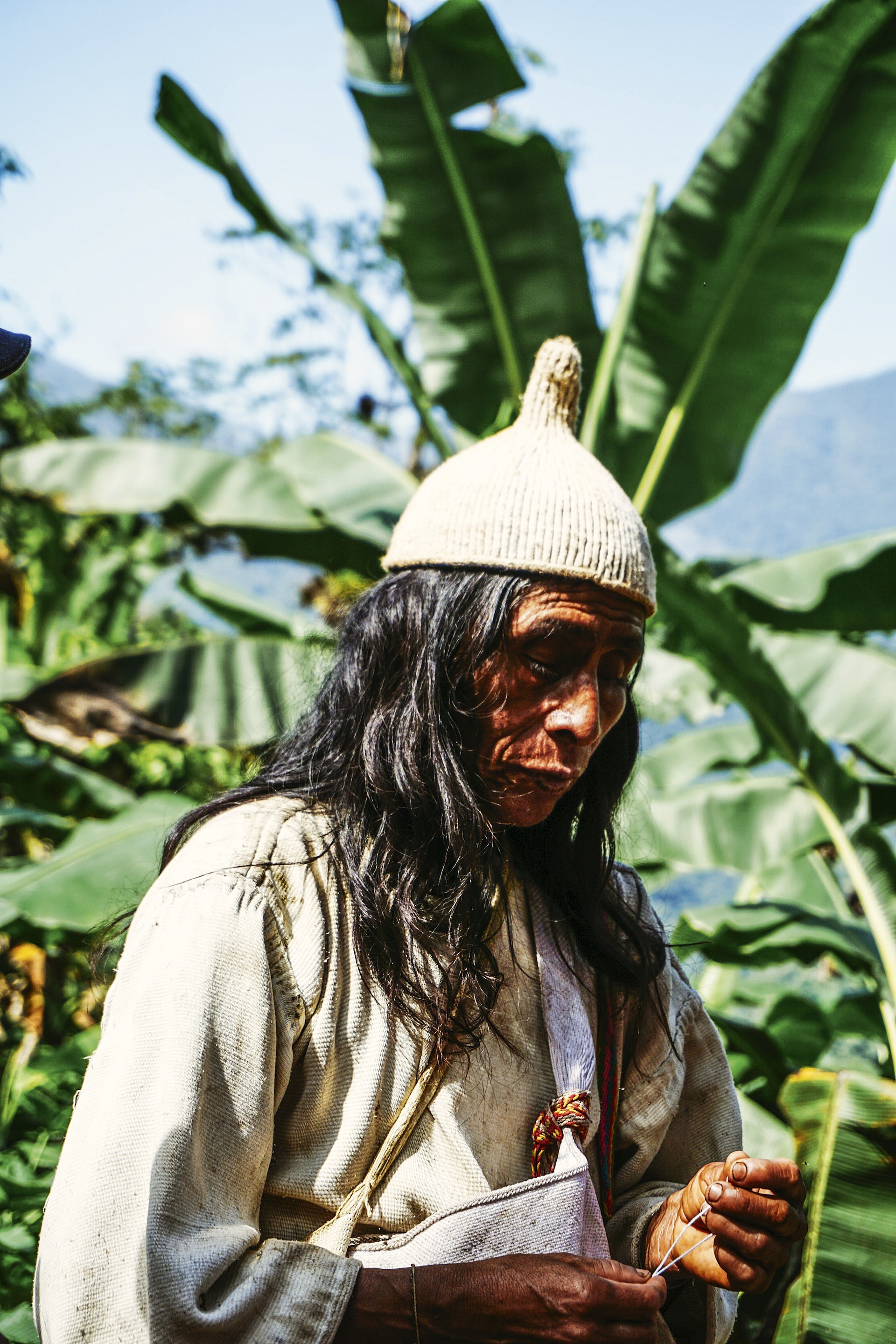
Flung some 80km off Vietnam’s south-east coast, Con Dao is a ragged birth mark in the midst of the South China Sea. The 16 islands are consistently overlooked by tourists – and among Vietnam’s few remaining crowd-free archipelagos. Even locals are relatively scarce as the islands are mostly uninhabited, ringed by wild, sweeping beaches and carpeted in jungle.
The main island, Con Son, with its old colonial town and boulevards hemmed by large gold-and-green cassia trees, is the only inhabited part. Here, you’ll find temples like the beautiful Nui Mot and markets piled high with fresh fruit and fish. Breakfast is best taken at one of the market’s stalls where scalding bowls of seafood noodle soup await.
For such a forgotten spot, Con Son has an extraordinary history – one that earned this paradise the unlikely nickname ‘Hell on Earth’ due to its gruesome use by French colonists and US invaders as a prison, torture and concentration camp. Built in 1896 by the French, you can still visit the vast prison complex, which is split across several locations. Famously grim are the ‘tiger cages’, where both the French and Americans chained prisoners to the ground before tormenting them.
Today, the bright island seems far from its macabre history. Its beaches are blindingly picturesque, bursting across the coast with teal and turquoise waters that lap at soft sands backed by emerald
forest – Dam Trau beach on the island’s north coast is its most isolated and perhaps prettiest. Snorkelling will reveal coral reefs with the chance to encounter green turtles, dugongs and dolphins.
The reefs at Con Dao are known as the best in Vietnam – both hard and soft corals are healthy and there are a handful of shipwrecks for divers to explore. March offers one of the best periods for diving, where you can get up close with bamboo sharks and the elusive manatees. The best place in the small archipelago for wildlife spotting is Bay Canh, an island to the east of Con Son where the rich sea turns electric blue.
The interior of Con Son is given over to the Con Dao National Park, where flora, fauna and breathtaking views of lotus-dotted lakes and dappled mountains abound. Hiking the forests, keep a look out for cheeky macaques, monster lizards and the giveaway tails of the black giant squirrel. For anyone seeking a challenge, Thanh Gia peak’s close dirt tracks lead up to a rewarding view across the vivid archipelago.

In 2013, Cape Verde officially changed its name to Cabo Verde – and not many people noticed. Few are familiar with the island nation either under its anglicised name or its newly monikered Portuguese version. It’s surprising, considering Cabo Verde is a paradisiacal getaway just six hours’ flight from the UK, sitting off Africa’s north-west coast across from Senegal. Each of its ten islands has its own personality and flavour, allowing visitors to pick and hop between holidays.
The country is known for its friendly locals, descendants of an impressive ancestral mix of West African peoples, expelled Sephardic Jews, Portuguese settlers and Italians, French and Spanish. Music, crafts and cuisine are vital to life in Cabo Verde: visitors will find numerous festivals, string instruments, geometrically painted fabrics and bottles full of local brandies, wines and liqueurs.
With a mixed heritage comes fusion cuisine. Food here is primarily
influenced by Portugal, West Africa and the bountiful seas. Islands
have their own specialities, with Santo Antão’s lamb and beans served alongside rich rummy grog, São Nicolau’s goatling stew, Fogo’s volcanic crater wine and Brava’s creamy goat cheese. Make sure to try the national dish, cachupa: a sumptuous slow-cooked stew of cassava, sweet potato, hominy dried corn, beans and either fish or meat.
Cabo Verde’s biggest draw is nature, which runs riot across the
archipelago. South-west Fogo (literally ‘fire’) is dominated by a
massive volcano, the highest point in the islands and a challenging
six-hour hike. Easternmost Sal and Boa Vista are known for wide sands and clear waters, perfect for water sports and swimming, while remote Brava is the greenest and prettiest, with plunging valleys, natural pools and flower-flecked trails. São Nicolau, Santo Antão and Santiago (home to the capital Praia) are the most dramatic, with terracottacoloured mountainscapes, gorges and unique geological formations.
For culture, look to São Vicente, where the lively town of Mindelo
has streets filled with colonial architecture, bustling restaurants and a thriving nightlife. For a quieter side, try Brava’s beautiful old town, Nova Sintra, and its sweet Furna fishing port. Alternatively, opt for lesser-known Maio, a serene island with castles, churches, preserved culture and very few tourists. Maio’s quietness is also popular with sea life: the sandy island is used for sea turtle spawning.
All Cabo Verde’s islands remain relatively under the tourist
radar, despite their prolific beaches, hiking trails, local
restaurants, thriving arts scene and historical museums. With regular flights jumping across the islands, visitors can carve
their own tailor-made trip to Africa’s bypassed archipelago
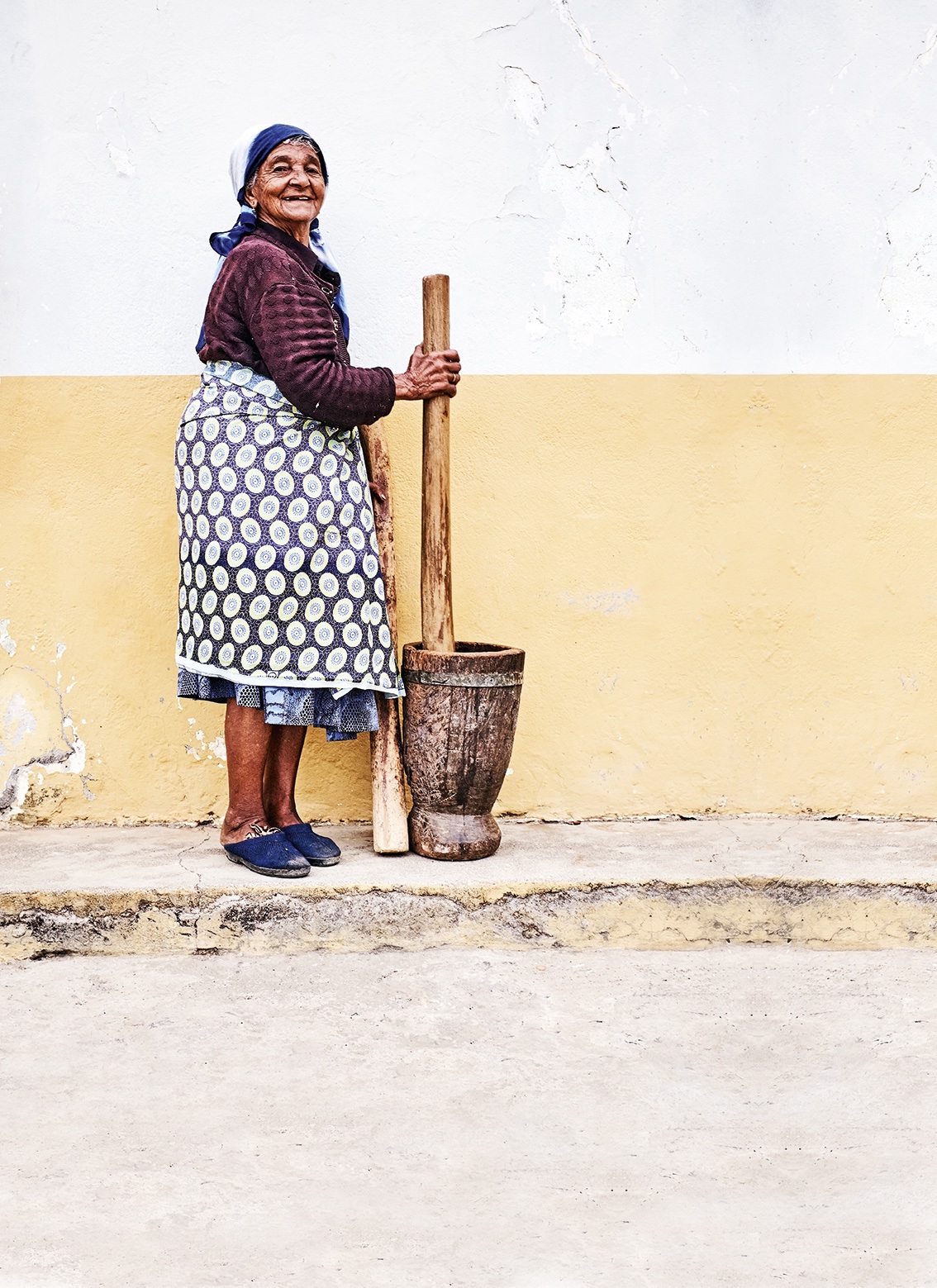
Just off Kenya’s northern coast is one of the world’s bestpreserved settlements of Swahili tradition and culture. The Lamu Archipelago, tucked into a broad, tropical bay, is littered with archaeological sites from pre-Colonial Africa and blissful beaches that have drawn in-the-know visitors for decades.
The archipelago is known for its eponymous island. Once a budget traveller’s paradise, Lamu’s golden and blue shores have become a more luxury destination. Today, Lamu Town – its Old Town is a Unesco World Heritage site – and secondary settlement Shela have boutique hotels, artsy shops, fine restaurants and healthy cafés. Its kept some of its backpack feel, however, with slow local life and lazy, sun-filled days.
You’ll find signs of old Lamu and its colourful history along the town’s labyrinthine alleys and streets. Once the dominating port of the region before British colonisation, Lamu Town’s stone architecture and carved doorways chart an amalgam of Arabic, Indian, Persian, European and Swahili influences. It’s believed the archipelago was settled at least 1,200 years ago, with old tribal towns still buried beneath the sands and silt. You can learn about the archipelago’s impressive past in local museums, before browsing its busy open markets.
Food here is all about the sea. Indian Ocean trade left a fragrant fusion of worldwide flavours with fresh reef seafood as its star. You’ll find Asian-inspired sashimi on menus alongside Swahili samaki na mchuzi, richly spiced fish with coconut cream. Local favourites include curries, biriyanis, barbecues and seafood platters, while street stalls grill up succulent mishkaki beef skewers with pili pili hot sauce.
If you can drag yourself out of the warm waters, take a dhow trip – you’ll inevitably be offered one from myriad locals, and they’re generally good value for a drifting trip of mangroves, nature, river fishing, ruins and more. For a more off-the-beatentrack day, spend a morning driving Lamu’s interior, where you’ll find landscape dotted with farms, palms and lowing cows.
There’s more to the islands than Lamu, though. Far fewer tourists make it to other parts of the archipelago, whose largest islands are Manda, Pate and Kiwayu. Just across from Lamu Town, Manda has only recently seen settlement, with a couple of beautiful resorts thrown in. It has a pristine, pretty beach and the old town of Takwa, an archaeological ruin of great significance. As the home of the archipelago’s airport, Manda makes an easy and worthy addition to Lamu itineraries.
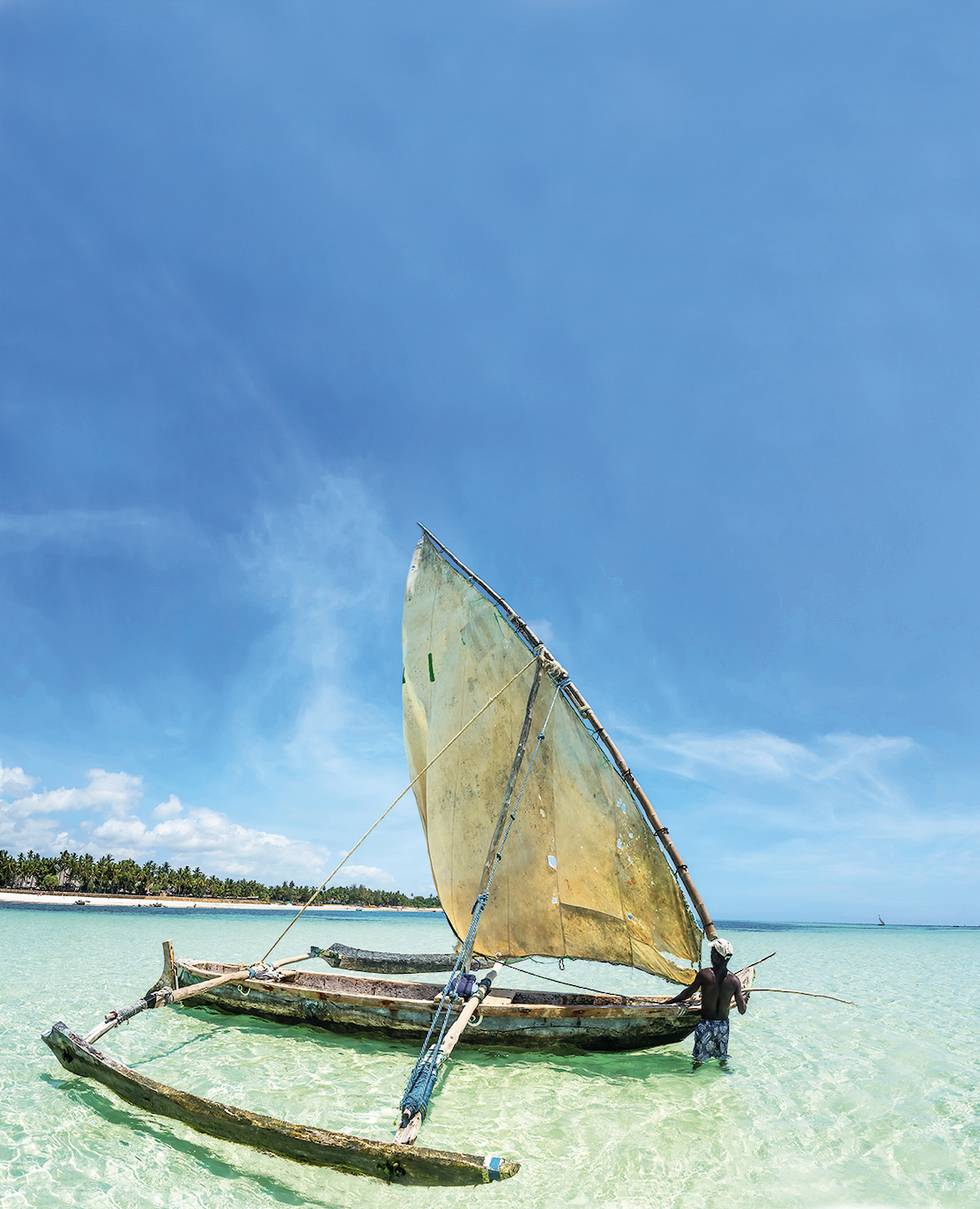
Montserrat is one of the least visited islands in the Caribbean – not, arguably, without good reason since 1995, when its Soufrière Hills volcano started erupting. By the time it had finished, two-thirds of the island had been destroyed, including its historic colonial capital, Plymouth. Life in Montserrat has gradually returned to normal since, but the number of tourists to the beautiful teardrop suspended between St Kitts, Antigua and Guadeloupe remains low – making this is a place you will share only with a handful of visitors immersed in slow, local life.
As well as unheard-of Caribbean seclusion, Montserrat also brings drama – and not just in its history. The island is covered in crowd-free beaches, towering peaks and folded mountainsides of dense rainforest. And, once the day-trippers leave, a world of hiking, birdwatching and turtle spotting unfolds for those who are wise enough to tarry awhile.
Plentiful footpaths criss-cross the isle, with shorter hikes leading to cascades and lookouts as well as full-day trails that reach mountain summits and cloud forests for the more adventurous. Birders will want to join enchanting nature trails to spot the gold-and-black Montserrat oriole – the island’s critically endangered national bird – as well as iridescent hummingbirds and canary-coloured warblers.
Meanwhile, Montserrat’s numerous beaches – long stretches of black, white and terracotta sands – have brilliant snorkelling, SUP, kayaking and swimming. You may spot green or hawksbill turtles, which use the island for nesting come summer. Rarely, the island also plays host to leatherback and loggerhead turtles.
It’s hard to visit Montserrat without acknowledging its darker side. The awe-inspiring volcano and capital are now part of the island’s exclusion zone, but you can take certified tours to visit the summit and explore the abandoned settlements. Plymouth is a remarkable, eerie ghost town, with people’s belongings left suspended in time. You can also visit the region on a boat tour, which takes you around the exclusion zone and Montserrat’s cliffs, coves and rippled landscapes.
Montserrat’s remaining 5,000 residents, many of whom migrated from across the Caribbean to help rebuild, are incredibly close – everyone knows everyone. This melting pot populace has created a mix of fusion and indigenous cuisine, hidden away in assuming cafés and fine-dining restaurants. Despite easy access to seafood, the national dish is goat water, whose name belies a rich stew: a leftover from indentured Irish settlers. Cooked over a wood fire, the soup is smoky and laced with clove, garlic, thyme, mace, marjoram and rum, and is an absolute must.
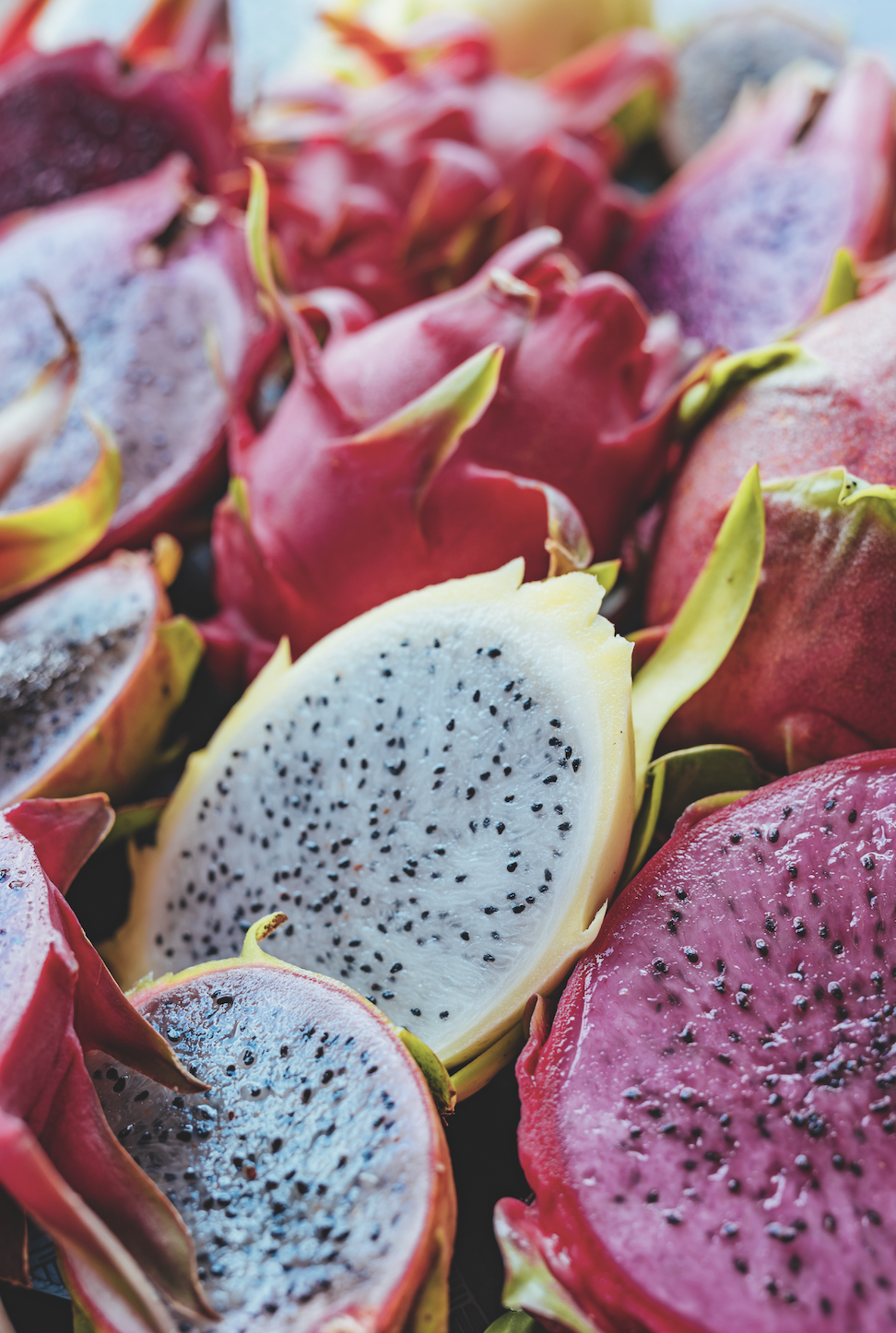
The three Cayman Islands lie under Cuba’s curve, just west of Jamaica. A British Overseas Territory, the trio are more usually known for their tax haven status, but there’s far more to these Caribbean islands. As well as glittering resorts, you’ll find scuba diving and snorkelling, deep-sea fishing and the chance to spot giant blue iguanas and pygmy blue butterflies.
Grand Cayman is the largest of the three, over 100km apart from its siblings. It’s filled with whopping all-inclusive resorts, ideal for those wanting to switch off: loll by the pool, float in the sea and sink into luxury. Grand Cayman’s visitors commonly come from cruises, which stop over for a day or two before heading on – but stick around to encounter the Cayman’s best bits.
Beyond its Seven Mile Beach sands and sun decks, Grand Cayman has enjoyable walks. The 200-year-old Mastic Trail takes you on an 8km return trip through the island’s prehistoric forests and mangroves. The walk teems with flora and fauna, among them orchids, parrots reptiles and crabs. Families should head to the island’s touristy but beloved Stingray City, a shallow sandbar where Atlantic stingrays flock. Grand Cayman also has a National Museum and National Gallery, both in George Town, and you can learn about the islands’ history of piracy and trade at Pedro Castle.
To the east are Cayman Brac and Little Cayman, home to some of the region’s best diving and wildlife. Both are great for bird spotting as they form part of the migratory stop-off between the Caribbean, Central and South America. Little Cayman is a breeding ground for the rare red-footed booby, which you can spot at the Booby Pond Nature Reserve, while Cayman Brac’s feathered residents include bananaquits, kingbirds, flamingos, brown boobys and Caribbean elaenia.
Cayman Brac is perfect for easy hiking. Its scenery, filled with secret coves and hidden caves, is the most diverse of the three. For drama and views, take one of the cliff walks that plunge 46m down to the ocean. These are the ideal places to catch the magnificent frigatebird, a bizarre-looking bird with an inflatable scarlet throat and a wingspan of up to 114cm.
Although Little Cayman is the smallest, it’s home to a wealth of silken sands and amazing scuba. Dive sites include Bloody Bay Marine Park – vertical walls, boulder formations and stunning coral gardens replete with tropical fish. Each of the islands have wreck dives too; the Soto Trader wreck remains remarkably intact off Little Cayman’s coast, while Grand Cayman is home to hundreds of wrecks for beginner and advanced divers.

The first impression of Campeche is colour. It’s a pastel palette of a city, its baroque Spanish architecture carefully restored to kaleidoscopic hues of lime, bubblegum and gold. Topped by bold blue spring skies, it’s surprising more people don’t make it to this stunning World Heritage city. But Campeche – the capital of its namesake state – is usually overlooked in favour of the Yucatán Peninsula’s big-hitters, Cancún and the Riviera Maya.
Campeche sits on the peninsula’s western shore, a two-hour drive south of Mérida city and six from Cancún. A historic fortified town founded by Spanish conquerors in the 16th century, Campeche was once one of the most important harbours of the colonial era. The rich port city inevitably came under fire from piracy and privateers, leading to the creation of its still-standing, Unesco-recognised fortifications: the only one of its kind. These walls contain its picturesque old town, where daytime draws photographers to its colourful downtown streets and at night restaurants and cafés pour across glossy cobbles on Calle 59.
The city is also home to two forts, San Miguel and San Jose. Even in these domineering stone outposts, colour has crept in: behind the grey exterior lie courtyards of buttercup and amber. There are also historic mansions dotted around the city whose marvellous architecture is expressed in myriad shades. Even the trams are beautifully bright and ornate, bustling around the city with guided tours to its best sites including Campeche’s grand colonial churches and museums.
Outside the protected inner walls, you’ll find a more lively city, with brilliant markets and, a short hop from the city, the Mayan archaeological sites of Acanmul, Edzná and Jaina. To the north of the city lies the Parque Natural Petenes, a mangrove park full of flamingos, pelicans and other birdlife.
Naturally, the coastal city is known for its seafood as well as habaneros since the state is one of Mexico’s largest producers of chillies. Alongside crab claws and coconut shrimp, Campeche is known for its marinated pompano (pámpano en escabeche), octopus ‘Sir Francis’ (with chilli and almonds) and dogfish dishes such as cazón empanadas and pan de cazón, a layered casserole made with tortillas.
Once you’ve mopped up the last of the rich, habanero-spiked sauce and refried beans, the Malecón is the ideal place to walk it off. This is Campeche’s sculpture-spotted, seaside walkway that curves along the urban coastline. Aside from letting a hearty dinner go down, it offers the best views for sunset over the Gulf of Mexico.
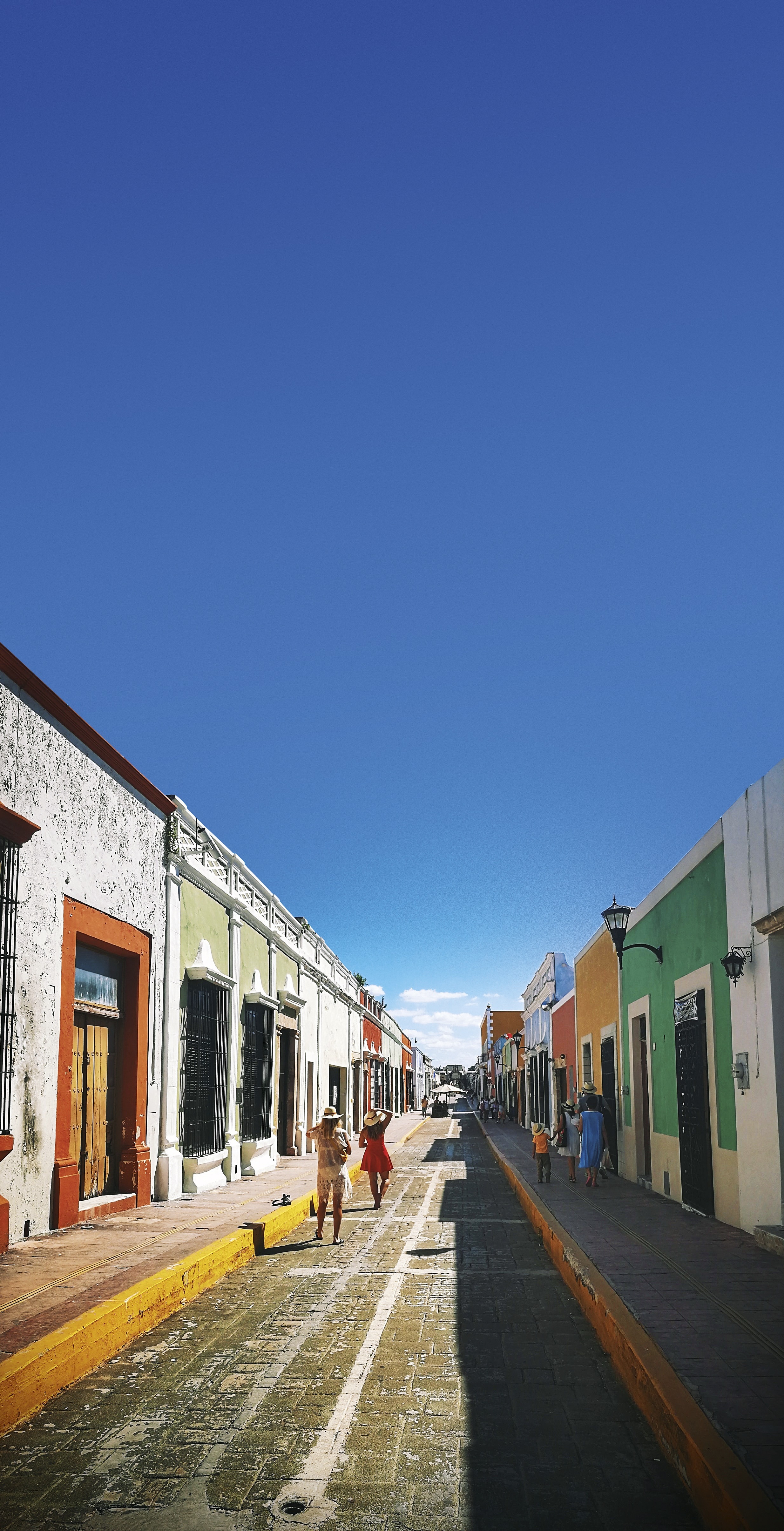
Subscribe and view full print editions online... Subscribe